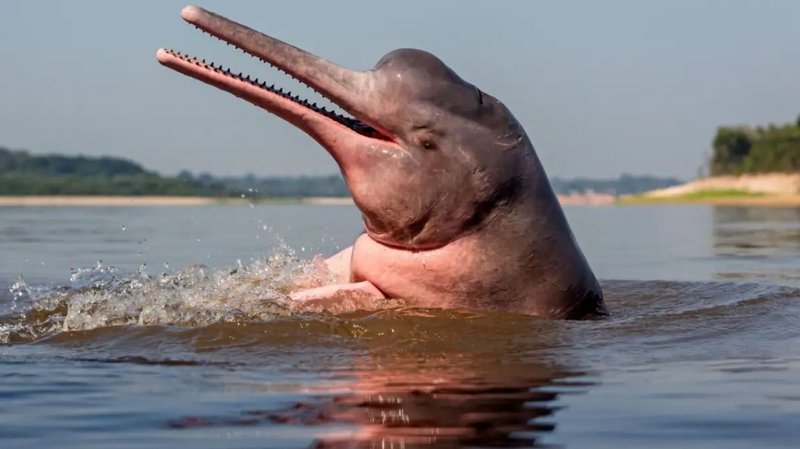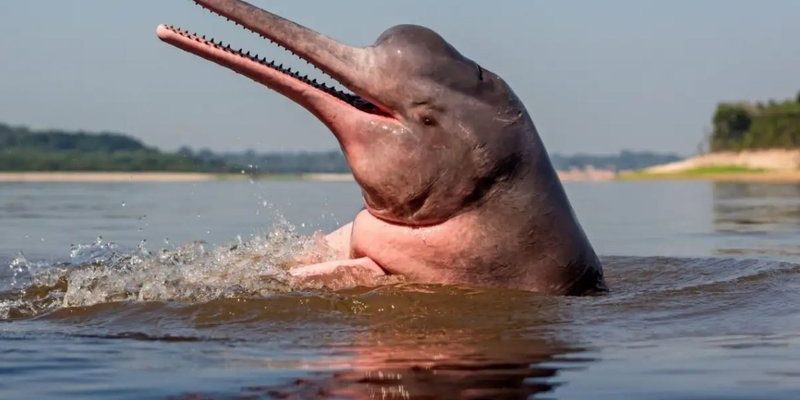
Imagine a dolphin that’s pink, loves to dive into muddy waters, and has a penchant for searching out fish. That’s the Amazon river dolphin for you! As we dive into this article, we’ll explore some of the most fascinating facts about these remarkable animals. From their physical features to their unique behaviors, I promise you’ll come away with a newfound appreciation for these incredible creatures.
The Unique Appearance of Amazon River Dolphins
You might first notice that the Amazon river dolphin looks quite different from its ocean-dwelling cousins. One of the most striking features is its color. While many dolphins are shades of gray or blue, the boto can range from a soft gray to a lovely pink. This pink coloration is thought to come from a combination of blood vessels close to the surface of the skin and various environmental factors, like the water they live in. Isn’t that fascinating?
Additionally, these dolphins have a more rounded snout compared to other dolphins. Their large, flexible bodies allow them to navigate through the dense waters and islands of the Amazon. You see, their unique shape helps them maneuver easily around submerged trees and other obstacles. This adaptability is crucial for hunting fish and avoiding predators. The next time you think about dolphins, remember the boto’s special features that make it a true marvel of the Amazon!
Intelligent Creatures
Amazon river dolphins are renowned for their intelligence. Often seen working together, they exhibit complex social behaviors that show just how smart they really are. For instance, they communicate with each other using a series of clicks, whistles, and body movements—almost like a secret dolphin language! Here’s the thing: they’ve even been observed using teamwork to corral fish into shallow waters, making it easier for them to hunt.
Moreover, researchers have noted that these dolphins display signs of problem-solving abilities. For example, if they encounter an obstacle while hunting, they’ll find a way to navigate around it rather than simply giving up. This type of critical thinking is impressive, especially for a creature that spends its life in the ever-changing landscape of the Amazon River.
Behavior in Their Habitat
Living in the Amazon River isn’t all smooth sailing. These dolphins thrive in murky waters where visibility is low, and they often rely on echolocation to find their way around. Echolocation is a fascinating ability that allows them to emit sounds and listen for echoes bouncing back from objects. It’s like using sonar to “see” their surroundings!
In addition to echolocation, Amazon river dolphins have developed peculiar habits to adapt to their environment. They often playfully slap the surface of the water with their tails, which may help scare fish towards their waiting mouths. This playful behavior demonstrates not only their hunting skills but also their social nature. Watching them interact can feel like witnessing an entire underwater dance party!
Diet and Hunting Techniques
Let’s talk about what these dolphins eat. The diet of the Amazon river dolphin mainly consists of fish, but it can vary based on the season and location. They enjoy a smorgasbord of local species, including catfish and piranhas, making them quite skilled at fishing. Their hunting techniques are as unique as they are; they often use their flexible necks to navigate through tight spots and catch fish hiding in crevices.
One particularly interesting aspect of their diet is how they sometimes hunt by using their mouths to stir up mud and reveal hidden fish. This technique might not be as glamorous as a high-speed chase, but it’s an incredibly effective way to find food, showing off their adaptability once again.
Social Structures and Family Life
Amazon river dolphins are highly social animals. They often travel in small groups, which can include mothers and their young. In these groups, you’ll find a strong bond between mothers and their calves. The mothers are fiercely protective and nurture their young for several years, teaching them vital survival skills along the way.
Interestingly, these dolphin communities don’t just consist of close family members. They can also mingle with other pods, reflecting a social structure that’s more complex than you might expect. Dolphins are known to engage in playful behavior, showcasing their intelligence and strong social bonds. This makes them not just beautiful creatures but also fascinating from a behavioral standpoint.
The Threats They Face
Despite their charm and intelligence, Amazon river dolphins face significant threats. One of the biggest dangers is habitat loss due to deforestation and human activity. As the Amazon rainforest shrinks, the rivers become less navigable and the ecosystems suffer. This directly impacts the boto’s food supply and breeding grounds.
Pollution is another major issue. The waters of the Amazon are becoming increasingly contaminated with waste and chemicals, which can affect the health of these dolphins. It’s really heartbreaking to think about how human actions can harm such incredible creatures. Conservation efforts are critical to ensure their survival, and every bit of awareness can help make a difference.
Conservation Efforts for the Amazon River Dolphin
Speaking of conservation, there have been ongoing efforts to protect the Amazon river dolphin and its habitat. Various organizations are working to raise awareness about the threats these dolphins face and the importance of preserving the Amazon ecosystem. This includes advocating for cleaner rivers, reducing pollution, and protecting the rainforest.
In addition, some areas have designated protected regions where these dolphins can thrive without human interference. By fostering partnerships between local communities, governments, and conservationists, we can help ensure a future for the boto. You might wonder, “What can I do?” Supporting conservation organizations, educating others about these incredible animals, and advocating for sustainable practices can contribute to their protection.
The Amazon river dolphin is more than just a pink creature cruising through the waters; it’s an integral part of the Amazon ecosystem. With their unique adaptations, social structures, and intelligence, they remind us of the beauty and complexity of nature. However, they are also a stark reminder of the impact humans can have on wildlife and ecosystems.
By learning about the challenges they face and supporting conservation efforts, we can play a role in protecting these iconic dolphins for future generations. So, the next time you think about dolphins, let the boto be at the forefront of your mind. They’re not just fascinating animals; they’re a crucial part of our world that deserves care and attention.

